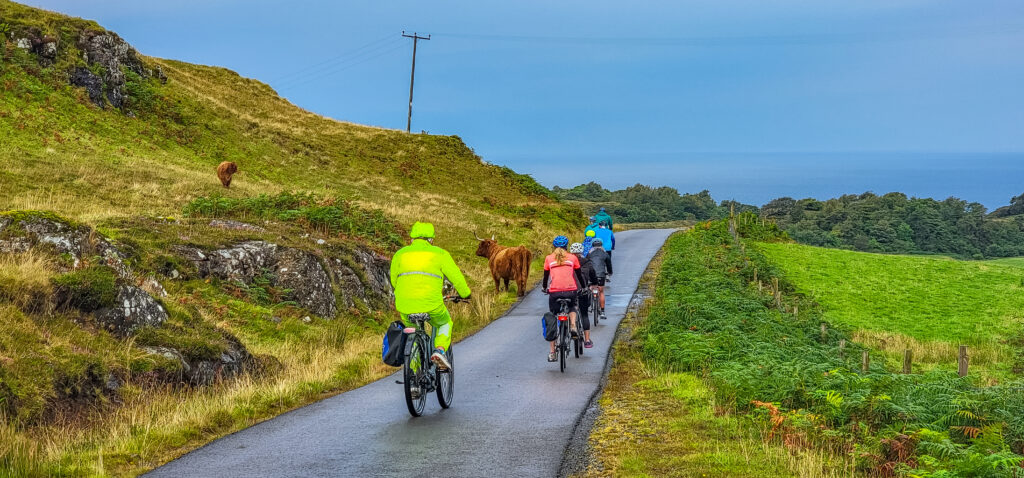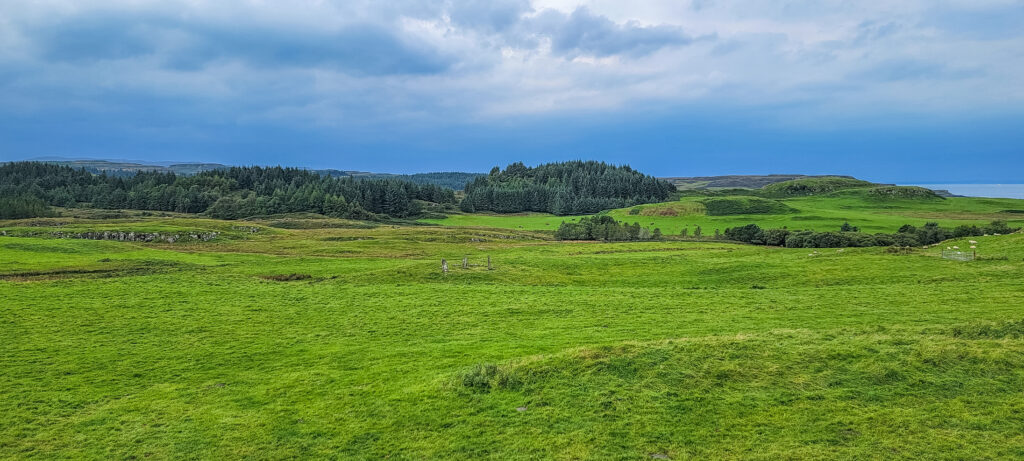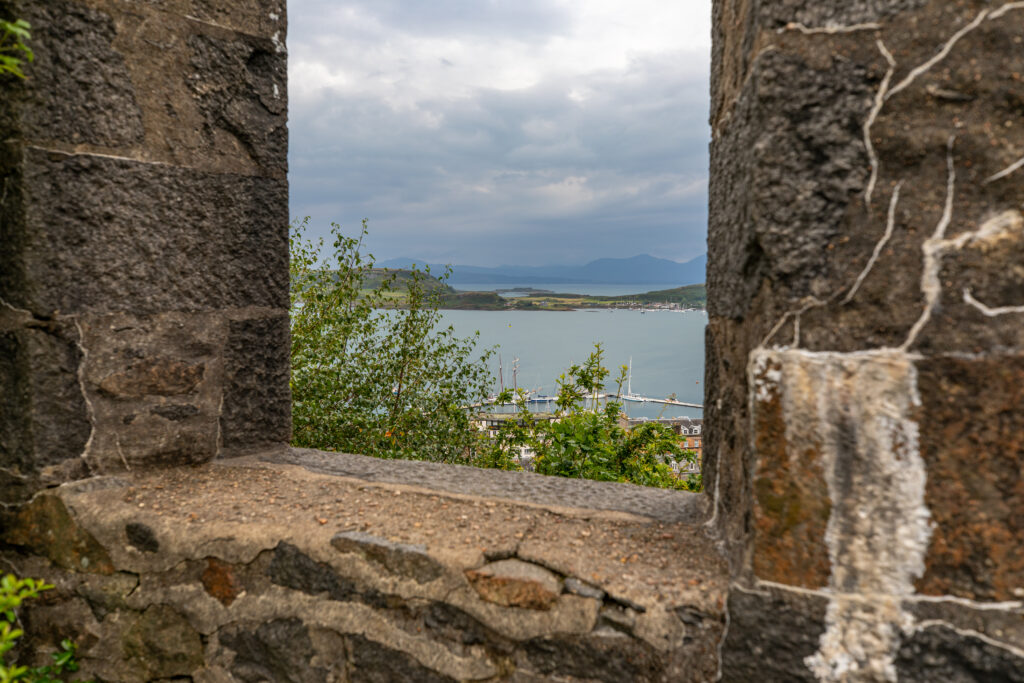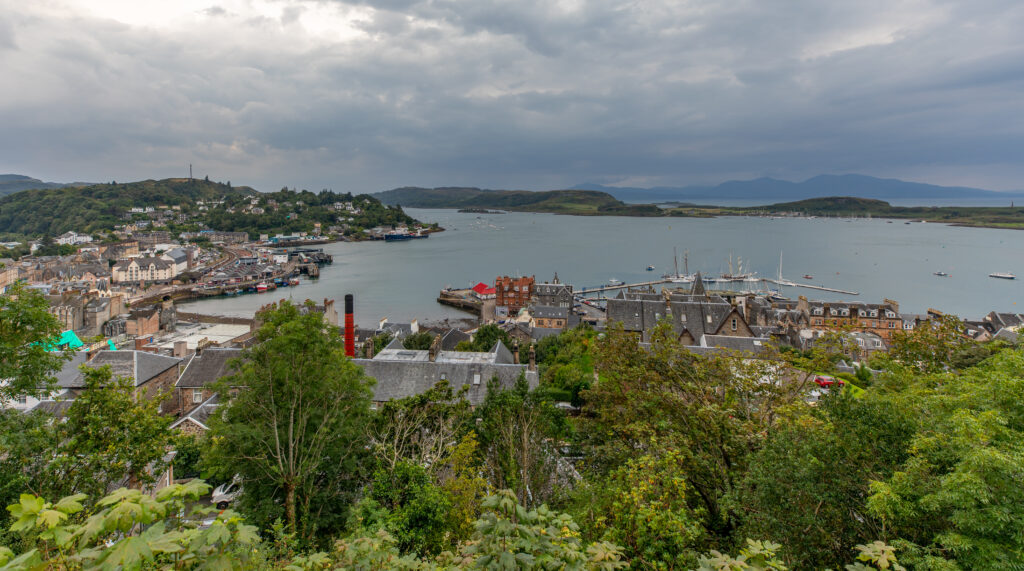Our last day on the bikes unfortunately started out as another wet one. Because of the weather forecast and steady morning rain, only about half of the riders made the revised ride to Glengorm Castle and back. The revised ride was only about 12 miles (19 km) round trip, and we were lucky enough to have very nice weather once we reached Glengorm.
The ride for the day was similar to previous rides, in that it involved a steep climb from the coast before setting in to some undulating hills for most of the route. Since we were at higher elevation we saw quite a bit of heather in bloom along the way.
We also rode through a large herd of Highland Cows (called Coos in Scotland) along the road.
Glengorm Castle was completed in 1860, after the new owner of the property cleared the existing township of Sorne. The name “Glen Gorm” (meaning Blue Glen) originated from the owner thinking that the air in the area was an odd colour, but it had turned out that the blue smog was caused by the burning of the houses at Sorne. Currently the property is operated as a Bed and Breakfast, with beautiful grounds overlooking the Atlantic Ocean.
The Castle also has a nice little cafe and shop in the former stables downhill from the main dwelling.
Around the back of the Castle we took advantage of a short walking trail through the grounds to some nearby standing stones overlooking the Atlantic.
The views were amazing throughout the walk and across the Castle grounds.
In the afternoon after we got back, we traveled by boat back to Oban, our original point of embarkation. While the skies were dark and stormy most of the way, we saw some interesting sights as we traveled through the Sound of Mull and across to Oban.
We saw several lighthouses along the way, but the most impressive was the Lismore Lighthouse on the point of Lismore Island. It marks the other side of the straights between Lismore and the Isle of Mull’s Duart Point.
We also saw numerous ferries traveling along or across the sound, including this one that seemed to be at the end of the rainbow.
Oban is a bustling port town that’s a major tourist destination. In the summertime the population swells from the normal 8,000 people to more than 24,000. Oban also features a well protected marina in it’s natural bay.
The main businesses and structures in Oban are along the waterfront.
Although there are a large number of houses and other structures built up into the hills overlooking the bay.
The main tourist sight in Oban is McCaig’s Tower. McCaig’s Tower, also known as McCaig’s Folly, is a prominent tower designed to look like the Coliseum in Rome. It is located on Battery Hill overlooking the town.
The tower has outstanding views of Oban through the 44 lancet arch windows.
The tower includes a viewing platform with an amazing overlook of the surrounding area.





















0 Comments